Creamy Salmon Noodle Casserole
Comfort food just got a major upgrade!
This creamy salmon noodle casserole is what happens when cozy home cooking meets restaurant-worthy flavor. With tender whole wheat noodles, flaky salmon, and a velvety sauce that’ll make you want to lick your plate clean, this dish is the definition of elevated comfort.
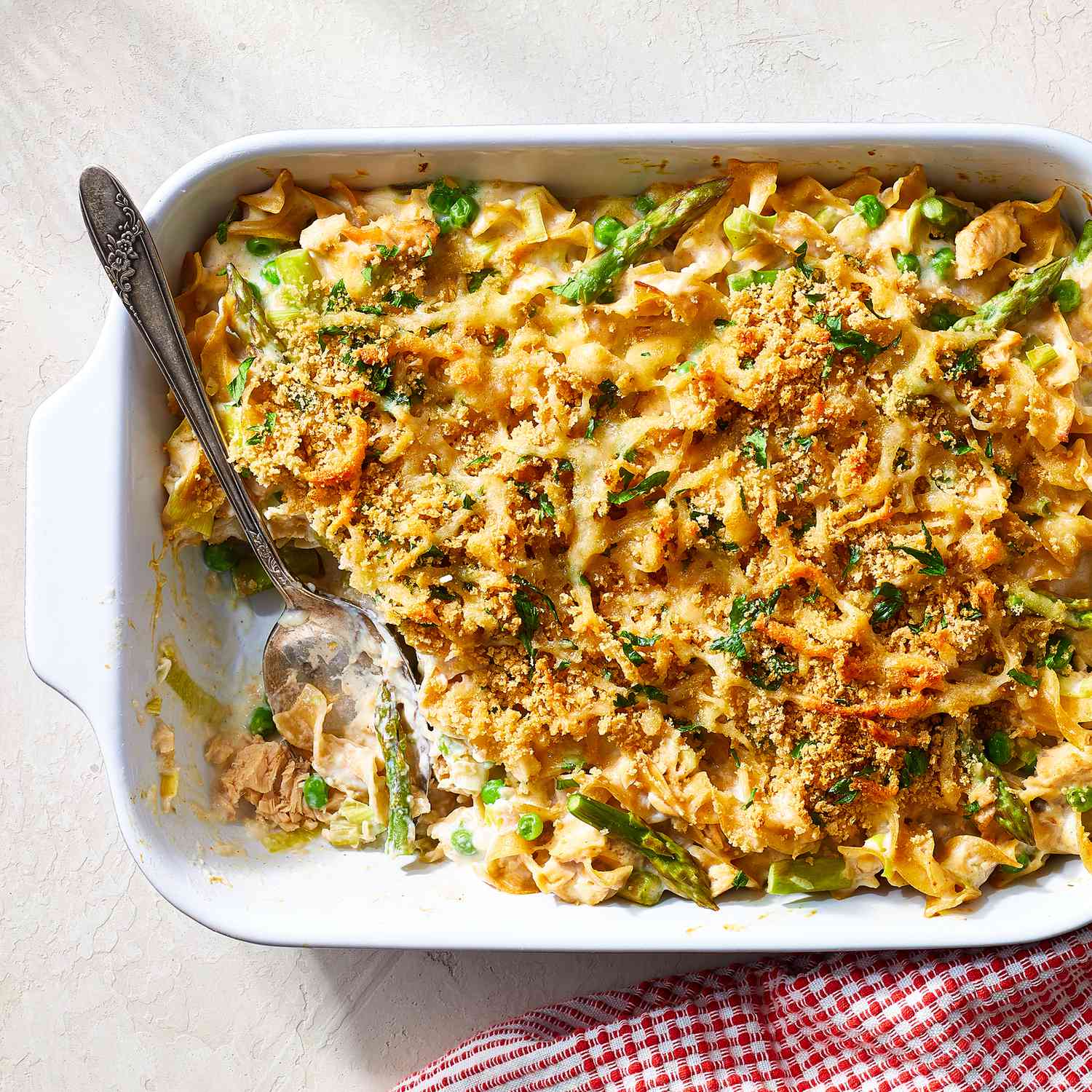
The secret to this casserole’s addictive quality? It’s all in the details. Fresh asparagus adds a spring-like brightness, while the leeks provide a subtle sweetness that regular onions just can’t match.
The sauce strikes that perfect balance between rich and light, with just enough Dijon and cayenne to keep your taste buds dancing without overwhelming the delicate salmon. Trust me, this isn’t your grandmother’s tuna casserole—it’s what happens when comfort food grows up and gets sophisticated.
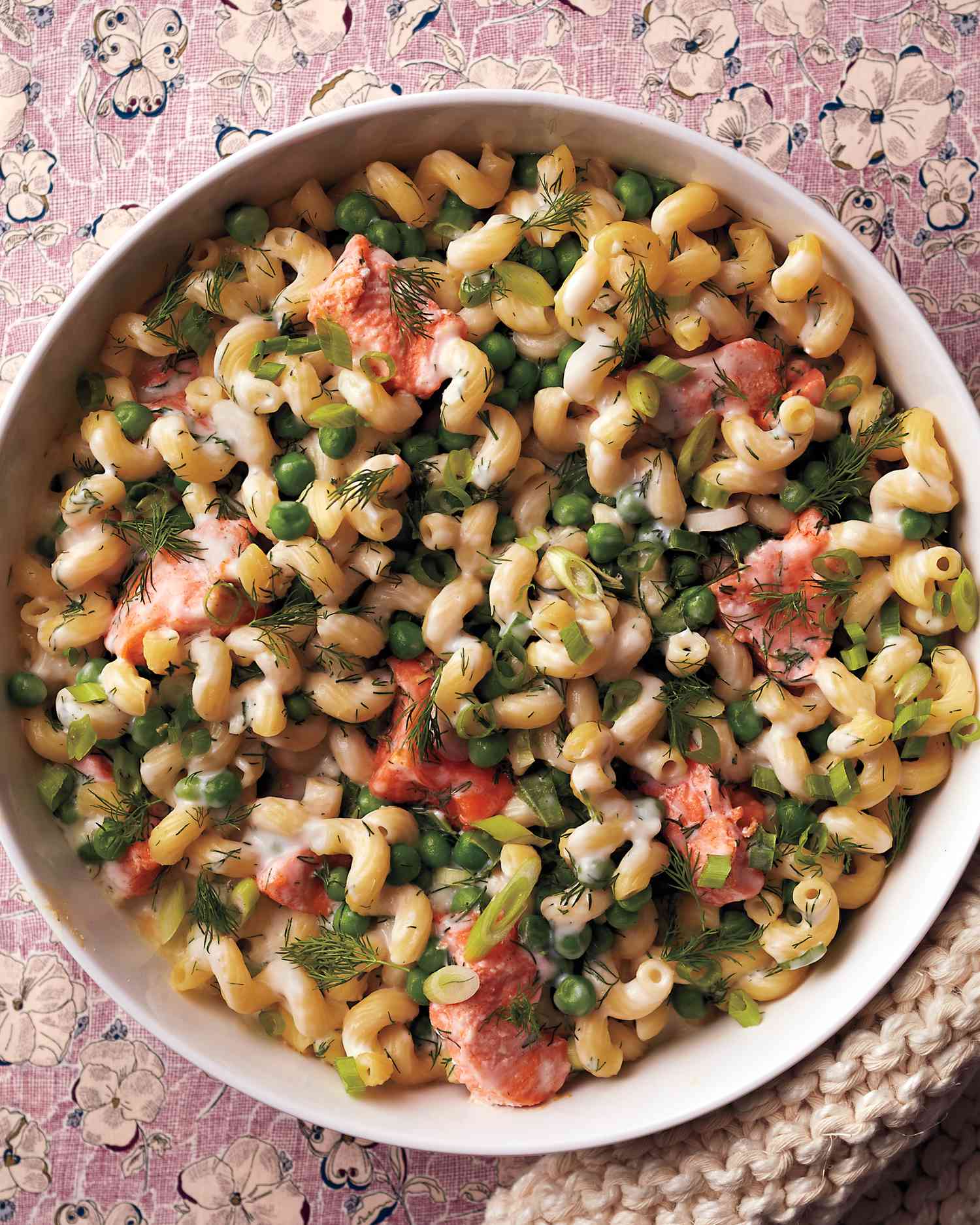
Ingredients
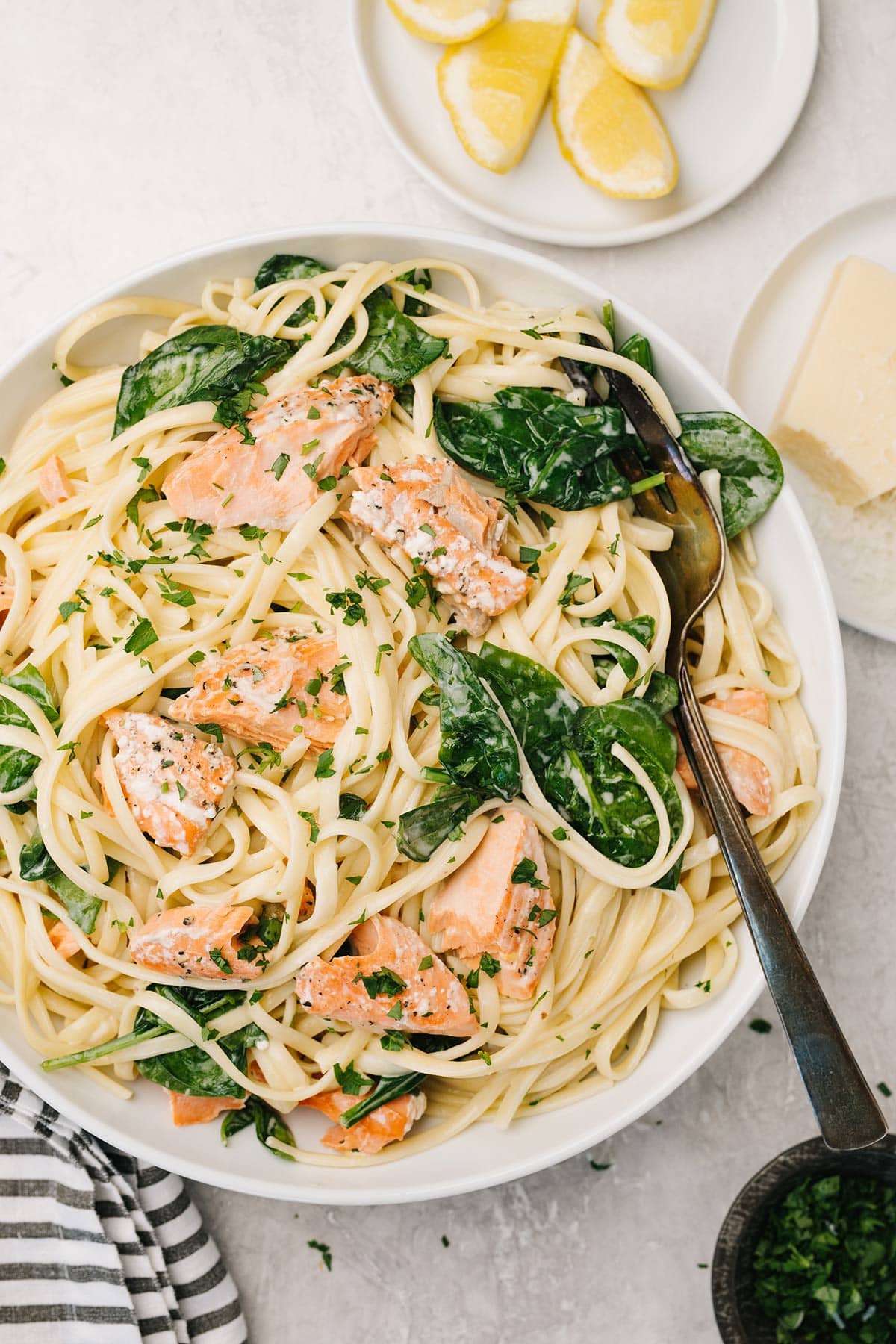
For the pasta base:
- 8 ounces whole-wheat egg noodles
- 1 cup sliced fresh asparagus
- 2 (6 ounce) cans no-salt-added boneless, skinless pink salmon, drained and flaked
- 1 cup frozen peas, thawed
For the creamy sauce:
- 2 tablespoons extra-virgin olive oil, plus 1 teaspoon divided
- 1 medium leek, halved lengthwise and thinly sliced crosswise
- 2 teaspoons minced garlic
- ¼ cup all-purpose flour
- 3½ cups whole milk
- 1 tablespoon Dijon mustard
- ½ teaspoon salt
- ½ teaspoon ground pepper
- ¼ teaspoon cayenne pepper
For the crunchy topping:
- ½ cup whole-wheat panko breadcrumbs
- ½ cup shredded white Cheddar cheese
- 1 tablespoon finely chopped fresh flat-leaf parsley
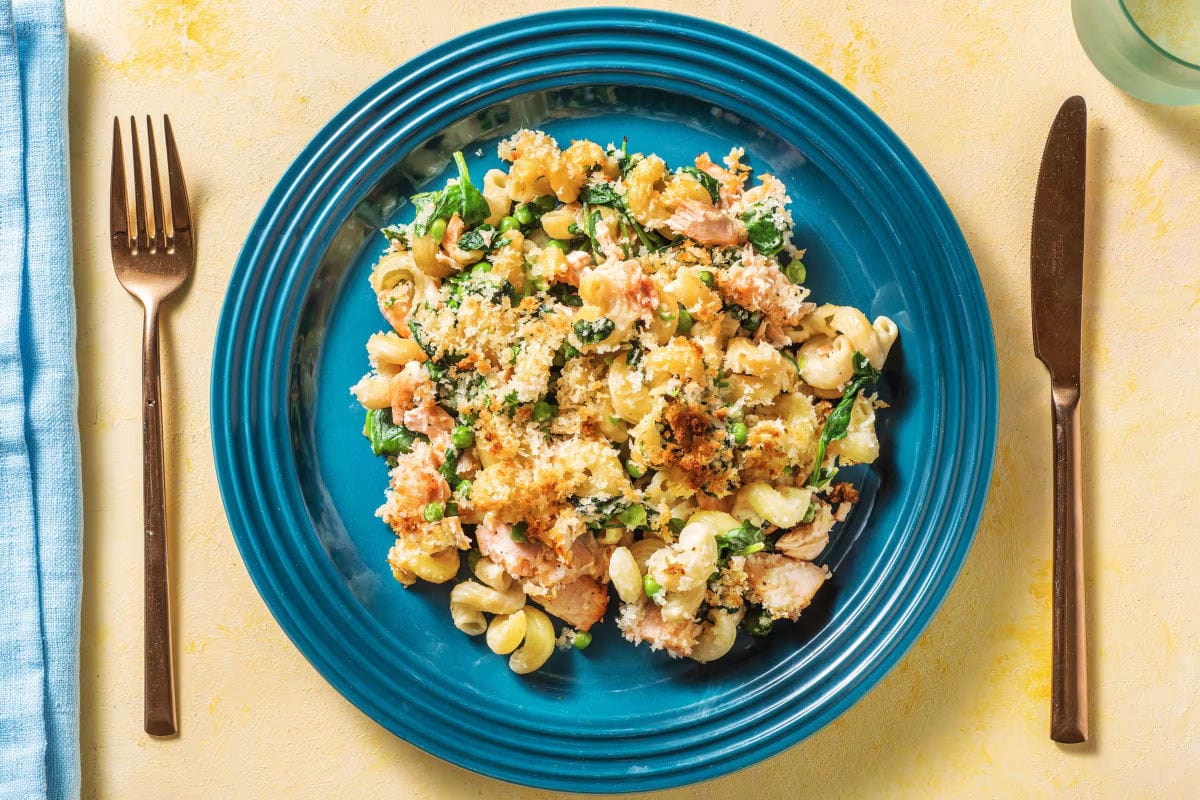
Steps
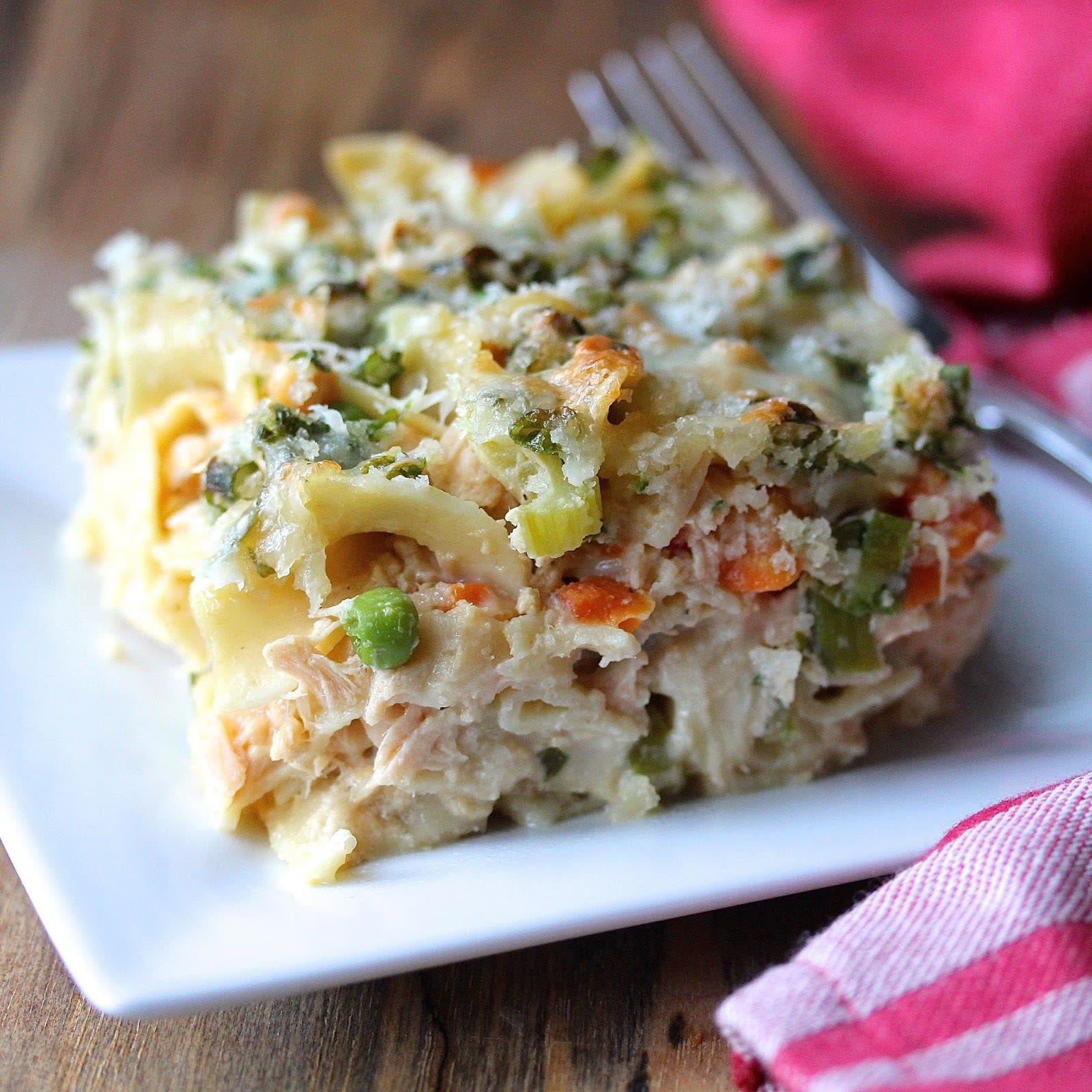
- Preheat oven to 375°F (190°C). Position rack in the center of oven. Bring a large pot of water to a rolling boil over high heat. Add noodles; cook, stirring occasionally, until slightly softened but still somewhat firm, about 5 minutes. The noodles should be underdone as they’ll continue cooking in the oven.
- Add asparagus to the pot with the noodles; cook, stirring often, until the asparagus turns bright green and becomes tender-crisp and the noodles are fully cooked, about 2 minutes. Don’t overcook the asparagus—it should still have some bite to it. Drain immediately in a colander and set aside.
- Wipe the pot clean with paper towels (no need to wash it). Add 2 tablespoons oil and heat over medium-high heat until shimmering but not smoking. Add leek; cook, stirring occasionally, until softened and translucent, about 5 minutes. You’ll know they’re ready when they’re soft but not browned.
- Add garlic to the leeks; cook, stirring frequently, until fragrant, about 1 minute. Be careful not to burn the garlic as it will turn bitter.
- Sprinkle flour over the leek mixture. Reduce heat to medium and cook, stirring constantly to prevent lumps, for 2 minutes. This step cooks out the raw flour taste and creates the base for your sauce.
- Gradually add milk in a steady stream, whisking continuously until smooth. This gradual addition prevents lumps from forming. Bring to a gentle boil over medium-high heat, whisking often to prevent the bottom from scorching, about 3-4 minutes.
- Reduce heat to medium-low; gently simmer, whisking often, until the sauce has thickened enough to coat the back of a spoon, about 5 minutes. The sauce should be the consistency of heavy cream—not too thick or too thin.
- Remove from heat. Add mustard, salt, pepper and cayenne; stir until well combined. Taste and adjust seasonings if needed.
- Add the noodle-asparagus mixture, salmon (make sure to flake it into bite-sized pieces) and peas to the sauce; fold gently with a rubber spatula until the noodles are fully coated. Be careful not to break up the salmon too much.
- Spread the mixture evenly in a 2-quart baking dish. For best results, use a dish that’s about 8×11 inches so the casserole has the ideal depth.
- In a medium bowl, combine panko, cheese, parsley and the remaining 1 teaspoon oil; stir until well mixed and all breadcrumbs are lightly coated with oil. This will help them brown evenly. Sprinkle topping evenly over the casserole.
- Bake uncovered until the cheese is melted and the topping is golden brown, about 15 minutes. If the top isn’t browning enough, place under the broiler for 1-2 minutes, watching carefully to prevent burning.
- Let stand for 5 minutes before serving. This resting time allows the sauce to set slightly and makes serving easier.
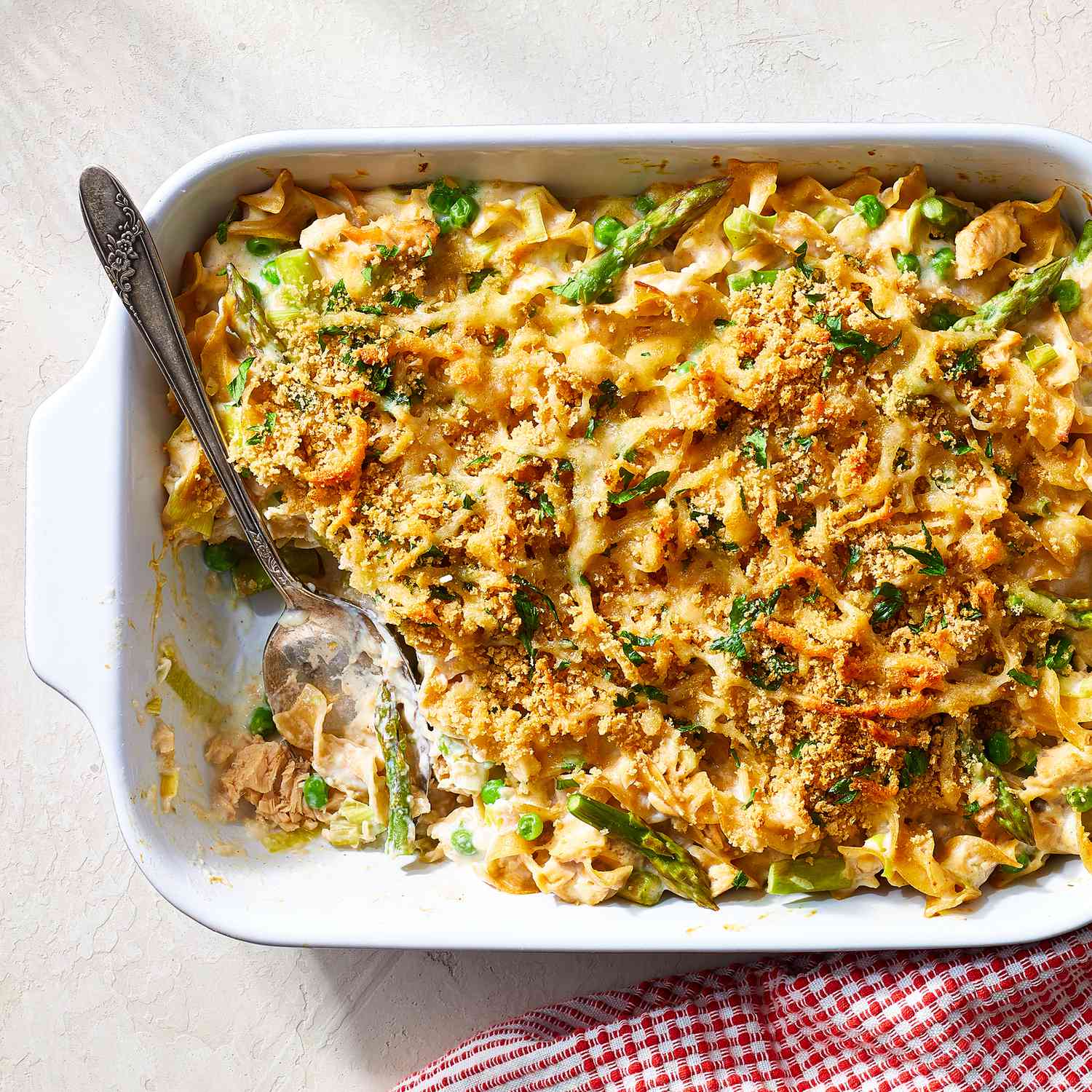
Smart Swaps
- Use 2 cups cooked fresh salmon instead of canned for a more elegant presentation
- Substitute broccoli florets for asparagus (use the same amount and cooking time)
- Try Gruyère or Fontina cheese instead of white cheddar for a more complex flavor
- Replace ½ cup of the milk with white wine for a sophisticated twist
- Use gluten-free pasta and 1:1 gluten-free flour to make this dish gluten-free
Make It Diabetes-Friendly
- Reduce carbs by using 4 ounces of whole wheat noodles and 2 cups of cauliflower florets (reduces carbs by approximately 15g per serving)
- Replace whole milk with unsweetened almond milk and ¼ cup heavy cream for richness (reduces carbs by 8g per serving)
- Add extra protein by incorporating ½ cup cottage cheese into the sauce (adds 14g protein to the dish)
- Serve with a side of non-starchy vegetables like roasted Brussels sprouts to lower the meal’s overall glycemic impact
Pro Tips
- For the best texture, don’t rinse the pasta after cooking—the starch helps the sauce cling better
- Make sure to properly drain the salmon to prevent a watery casserole
- For a make-ahead option, prepare through step 11, cover and refrigerate for up to 24 hours, then bake for 25-30 minutes until hot throughout
- Let the casserole rest for a full 10 minutes if you want cleaner, more defined servings